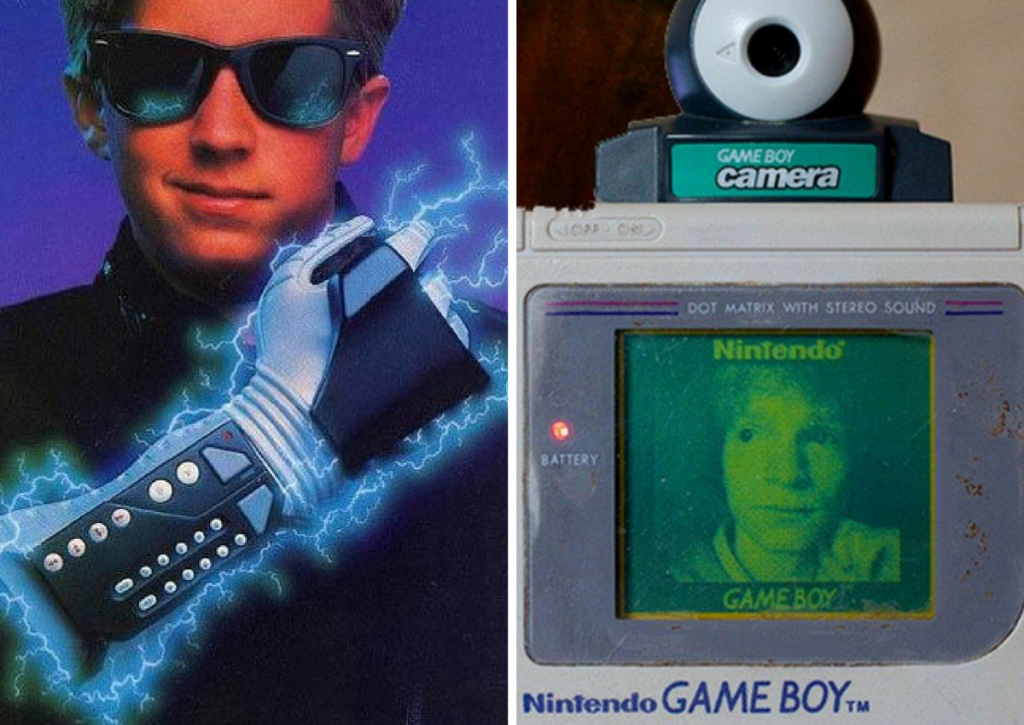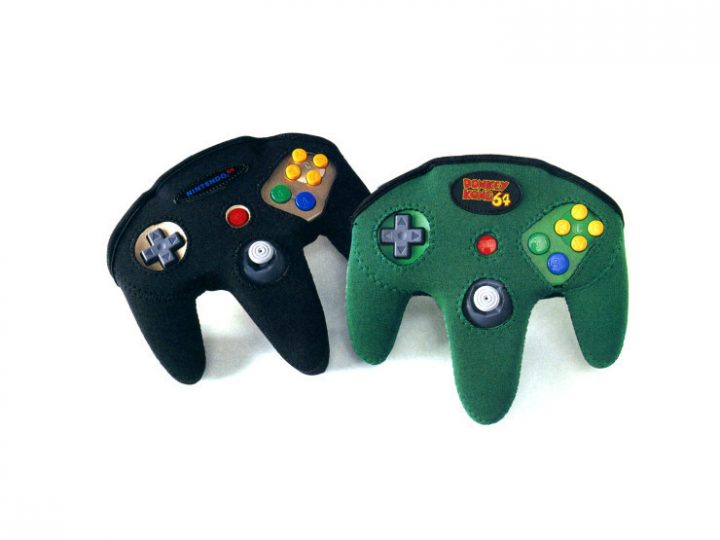The video game market has spawned a number of useless gaming accessories, and all of them vie for your attention. They exist for the same reason any commercial products exist: someone had an idea and wanted to profit from it.
In these cases, the video game accessory ideas might be some of the worst ones ever peddled.
Most of the accessories you’ll encounter here are the kinds of products you bought, tried once, and then threw into your closet. They languished, unused for years, until your mom found them in the closet while converting your old bedroom into a home office (hey, it happens to the best of us). At that point, no one alive remembers what they were actually intended to do.
Though useless game accessories are remembered as a thing of the past, current video game systems still have their fair share of pointless paraphernalia. When you’re done reading, please share the most useless video game accessories you’ve ever run across in the comments.
1.ASG Video Jukebox (1994)
ASG designed the Video Jukebox for Genesis owners who were too lazy to insert and remove one of their six favorite Genesis games from the console every time they wanted to change games. Indeed, you could pay $50 for a device that let you simply push a button to choose one of the six games. For an extra $50 apiece, you could chain multiple Video Jukeboxes together for a total online selection of 36 games—a $10 value, yours for only $300.
I know what you’re thinking. “Wait a minute, Benj! Did you say I could play the six games I already own for an extra $50? Sold!” Well sorry, folks, it seems that this idea was so bad that it never actually made it to the market. Either that, or it sold so poorly that no one has seen a Video Jukebox since this ad ran in 1994.
2.Skywriter Stick Station (1984)
Fresh from the Useless Accessories Hall of Fame comes the Skywriter Stick Station, a $15, three-pound piece of solid poplar wood for your Atari 2600 joystick. It solved a problem that no one had: it turned the handheld Atari joystick into a non-handheld one, presumably to simulate an arcade cabinet. Had Atari wanted its joystick to be an immovable, un-portable device, it would have designed it that way in the first place. Consumers agreed, and the Stick Station vanished as quickly as it arrived.
3.Champion Video Game Gloves (1992)
No serious gamer should be without a pair of Video Game Gloves by Champion. The extra padding prevents players’ hands from getting chapped, cramped, or blistered while pushing it to the next level. These gnarly gloves even provide a padded thumb sleeve for enhanced video game play. They let you play faster and more intensely than ever before.

4.Aura Interactor (1994)
Unlike other items on this list, the Aura Interactor isn’t completely useless outside the realm of console video games. It’s a generally well-received device in virtual reality enthusiast circles, and it can help a deaf person to experience audio through the vibrations of its built-in tactile transducer. Such a transducer, like a subwoofer for movement, turns low-frequency sounds into physical momentum that thumps the player.
The transducer came packed into a backpack-like vest that its manufacturer marketed primarily toward players of the Super NES and Sega Genesis. The biggest problem with the Interactor was that it didn’t significantly enhance the experience of playing 2D console games like Super Mario World or Sonic the Hedgehog. Plus, at $159.99, it cost as much as an entire video game system itself.
5.Nintendo 64 Controller Glove (1999)
Tired of having your Nintendo 64 controllers slip out of your hands like a wet bar of soap? Then you need a Nintendo 64 Controller Glove. The foamy, spongy, Neoprene cover fits snugly over your Nintendo 64 Control pad to prevent slippery N64 control accidents brendaclark sells homes. Or at least that’s what Nintendo marketed it as doing back in 1999, when the company offered these gloves in its Nintendo Power Supplies Catalog for $8 each.
6.Sega Activator (1993)
During the height of the one-on-one fighting game craze (circa Street Fighter II and Mortal Kombat), Sega released a controller that let players control on-screen combatants with real punches and kicks instead of the measly push of a button. This controller, the Activator, was an octagonal ring with eight different infrared control points. To use the Activator, players would stand in the center of the ring and interrupt the invisible infrared beams bouncing off the ceiling by using their limbs.

Conceptually, the Activator sounded neat (especially back then), but it was complicated to set up, imprecise, expensive ($80), and cumbersome to use, largely because most game designs slighted it.
7.LJN Roll & Rocker (1989)
Long before the Wii Balance Board, toy maker LJN released the Roll & Rocker for the Nintendo Entertainment System (NES). Instead of burdening the player with the quick and nimble directional pad on the standard NES controller, a movable stand-on platform allowed players to shift their body weight to control a character on the screen. Imagine playing Super Mario Bros. 3 with this and you’ll understand why no one bought it.
8.Nyko Hip Clip (2000)
If you thought wearing a cell phone holster was nerdy, then take a look at the ironically named Hip Clip, a belt-mounted holster for your Nintendo Game Boy Color. Perfect for a gaming showdown outside a saloon, the Hip Clip lets you quickly draw your portable game system. You can also challenge your opponent to a Tetris duel on the spot. Either way, walk tall knowing you have your trusty Game Boy Color ready at all times.

9.CTA Digital 6-in-1 Sports Pack (2009)
With the Wii motion controllers, players can simulate sports like golf, tennis, and baseball. After its release in 2006, peripheral manufacturers rushed to create clumsy plastic Wii Remote add-ons that made the controller more closely resemble a tennis racket, baseball bat, or golf club. Though the electronically inert attachments looked the part, they provided no benefit to game play.
10.Nintendo R.O.B. (1985)
SThe Nintendo R.O.B. (Robotic Operating Buddy) shipped with the Nintendo Entertainment System Deluxe Set between 1985 to 1987—and that’s about all it did. The R.O.B. quickly found its way into many gamers’ closets for several reasons: it came with lots of easily lost, small parts, it required its own set of four AA batteries, it was tricky to set up properly, it only worked with two games, and it added very little to the video game experience.
Nintendo, while trying to establish itself in the US, included the robot as a gimmick to further differentiate its console from game systems. Shortly after sales of the NES took off, Nintendo dropped R.O.B. from its NES set, making the unit fairly rare today.

